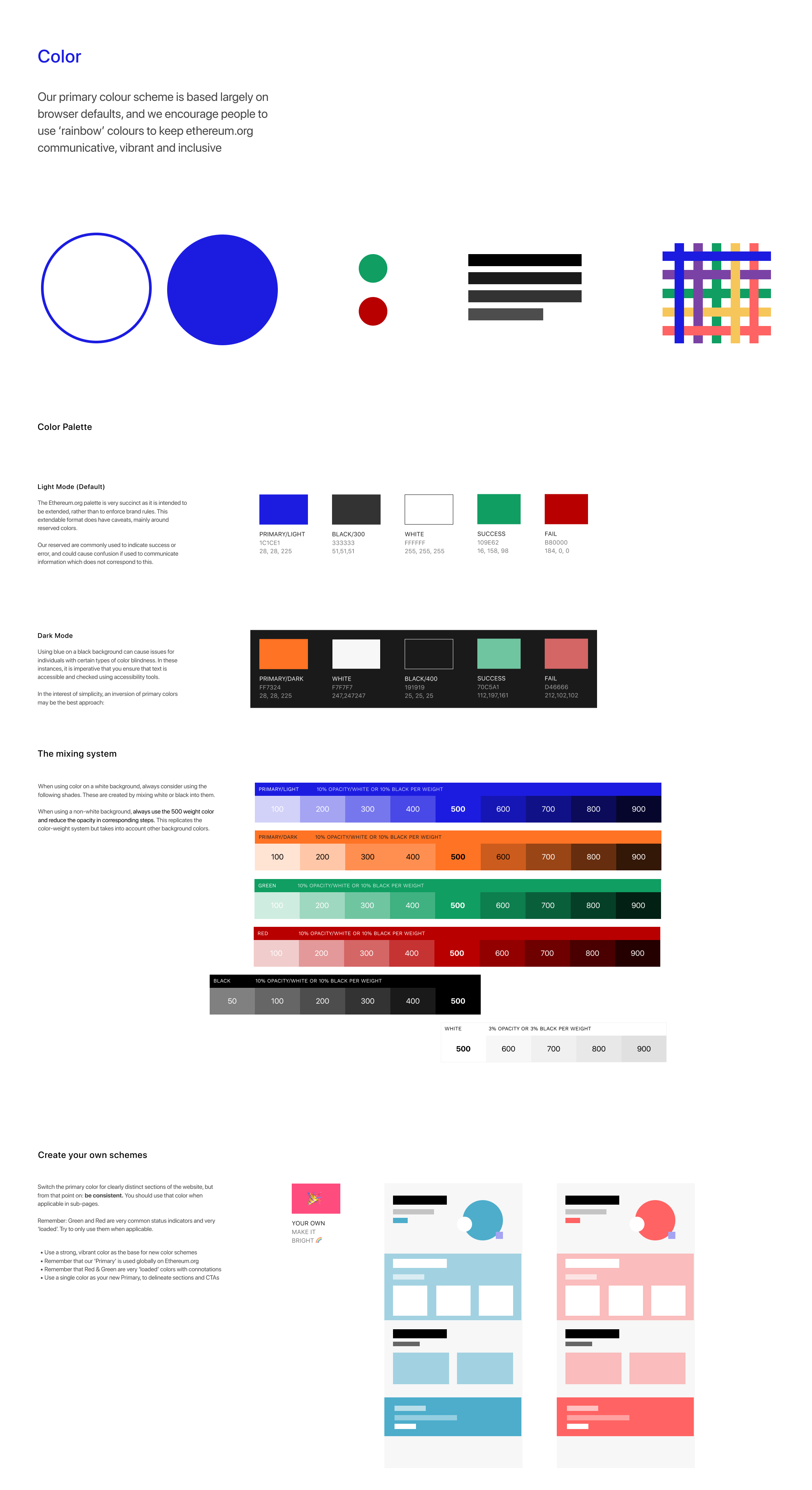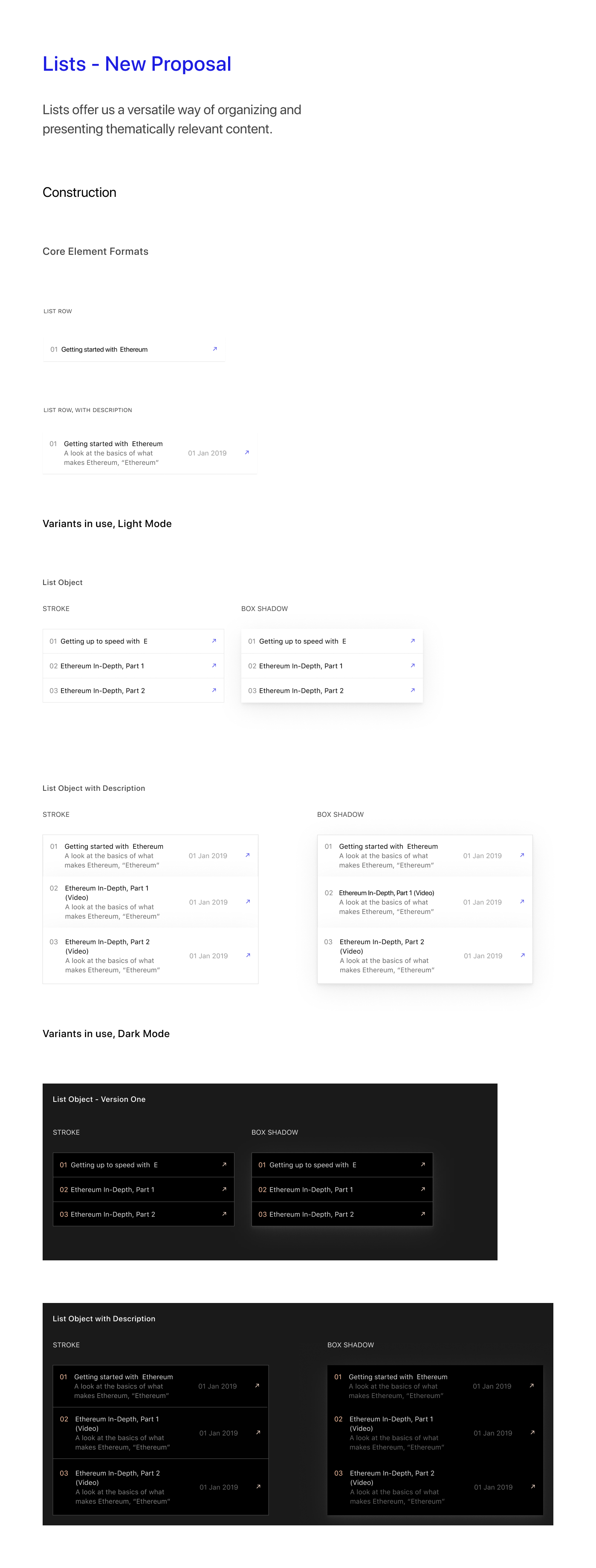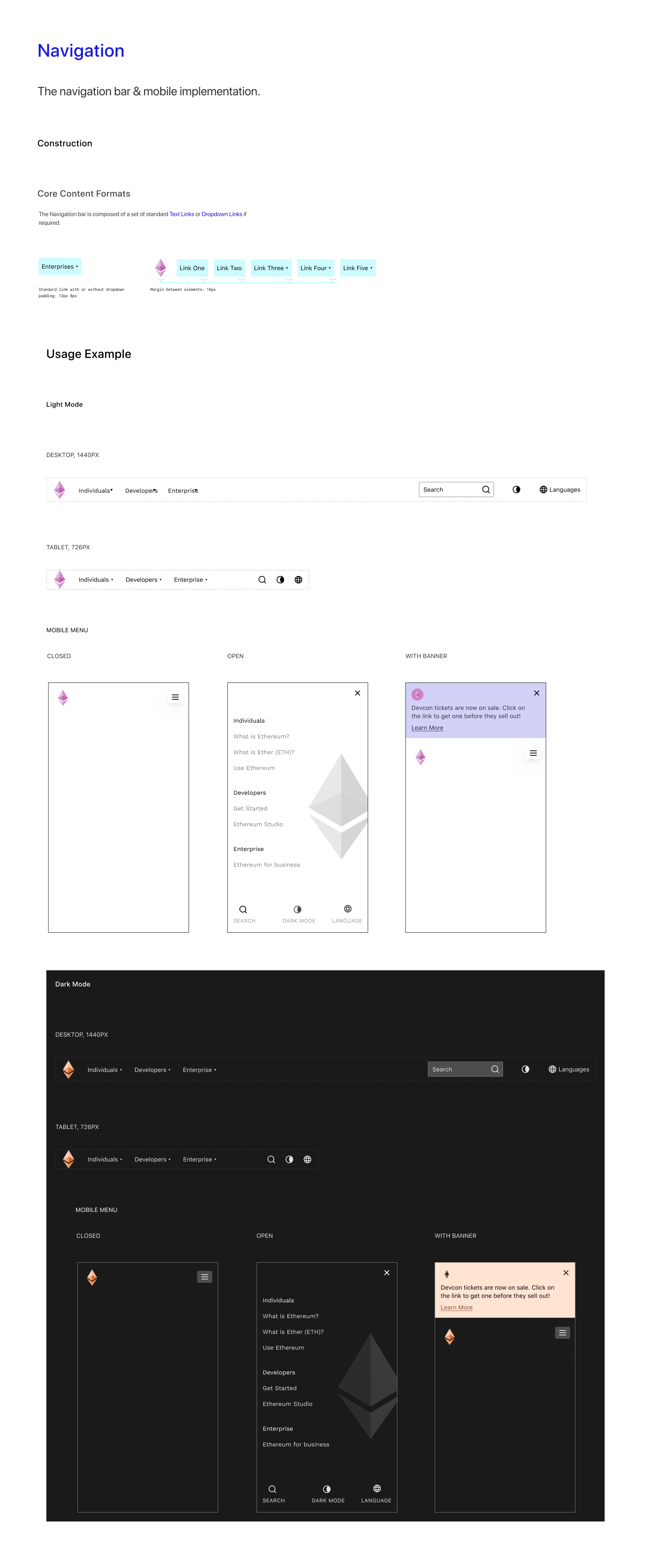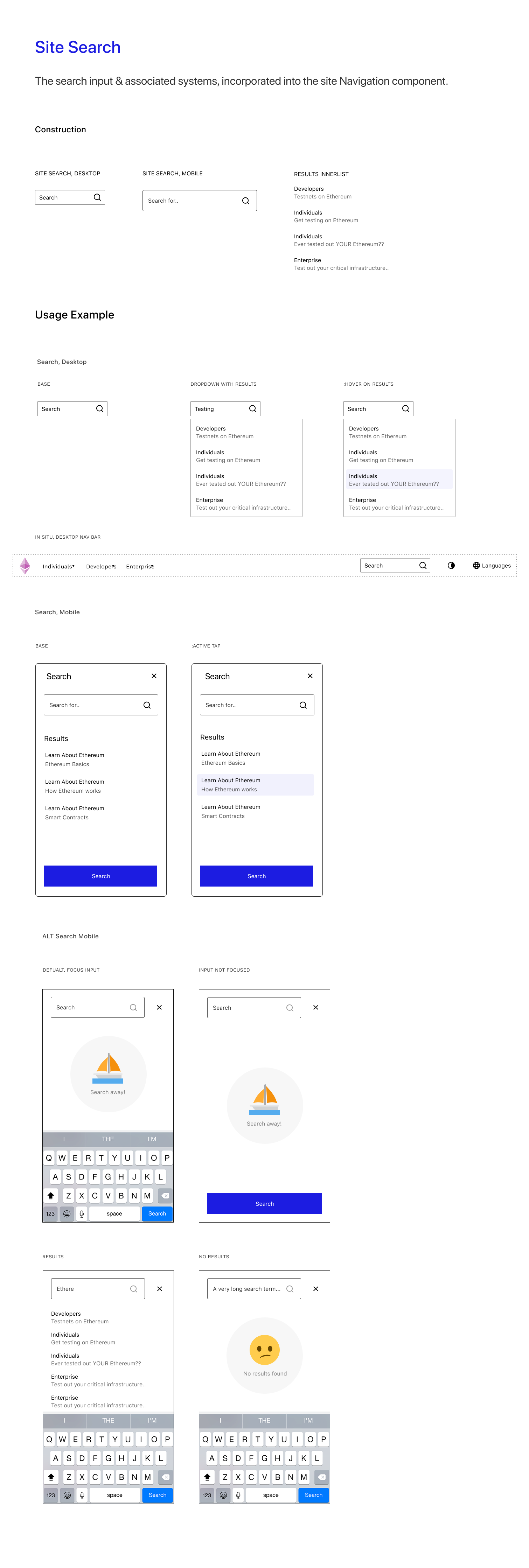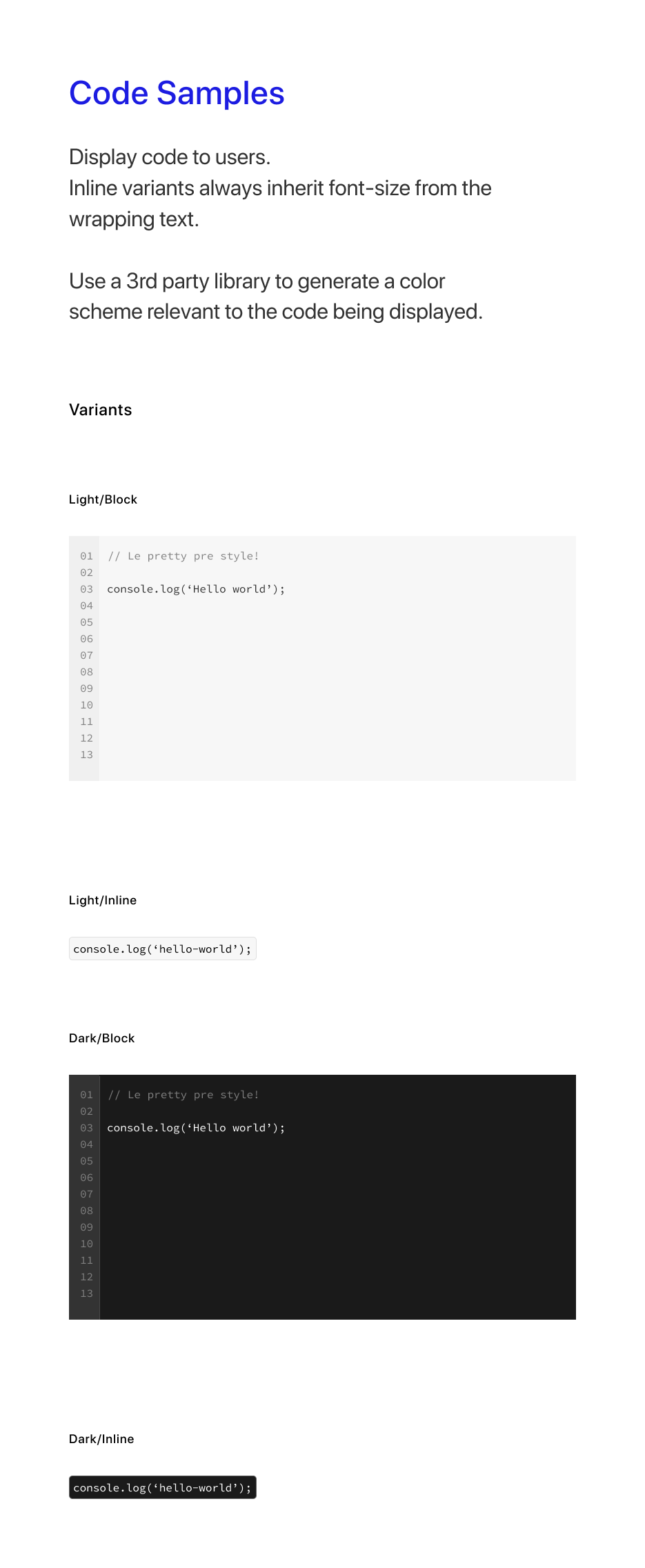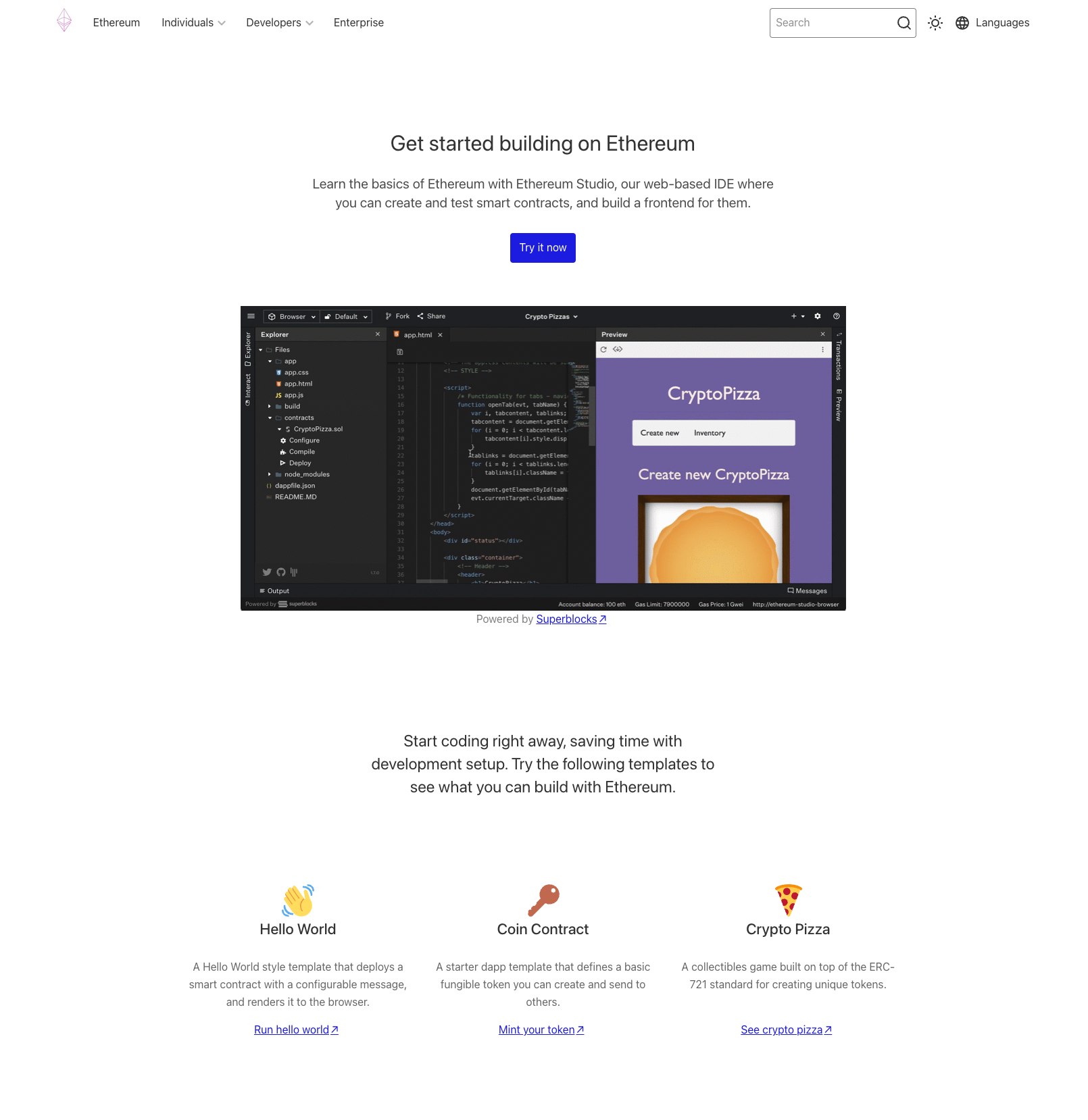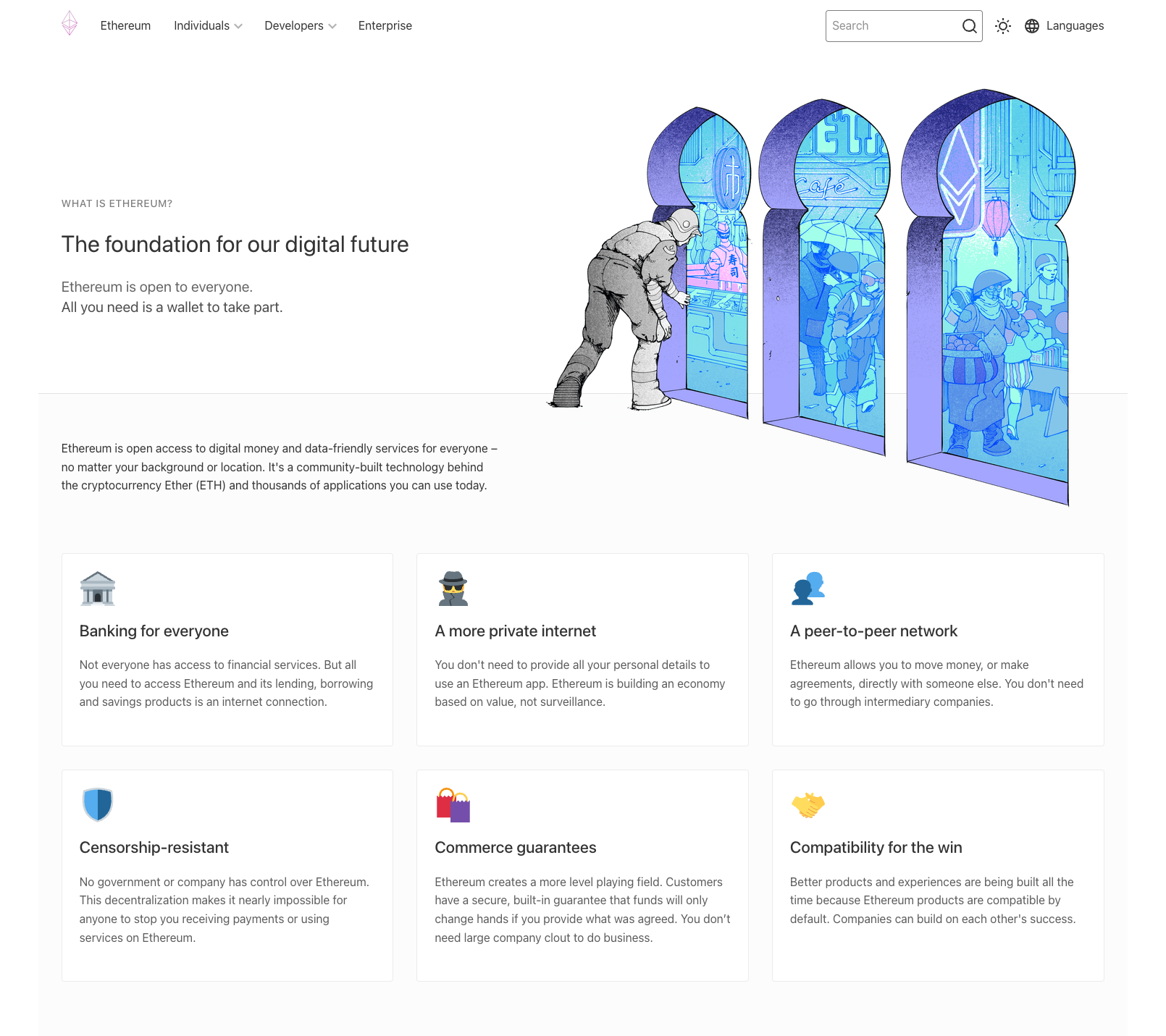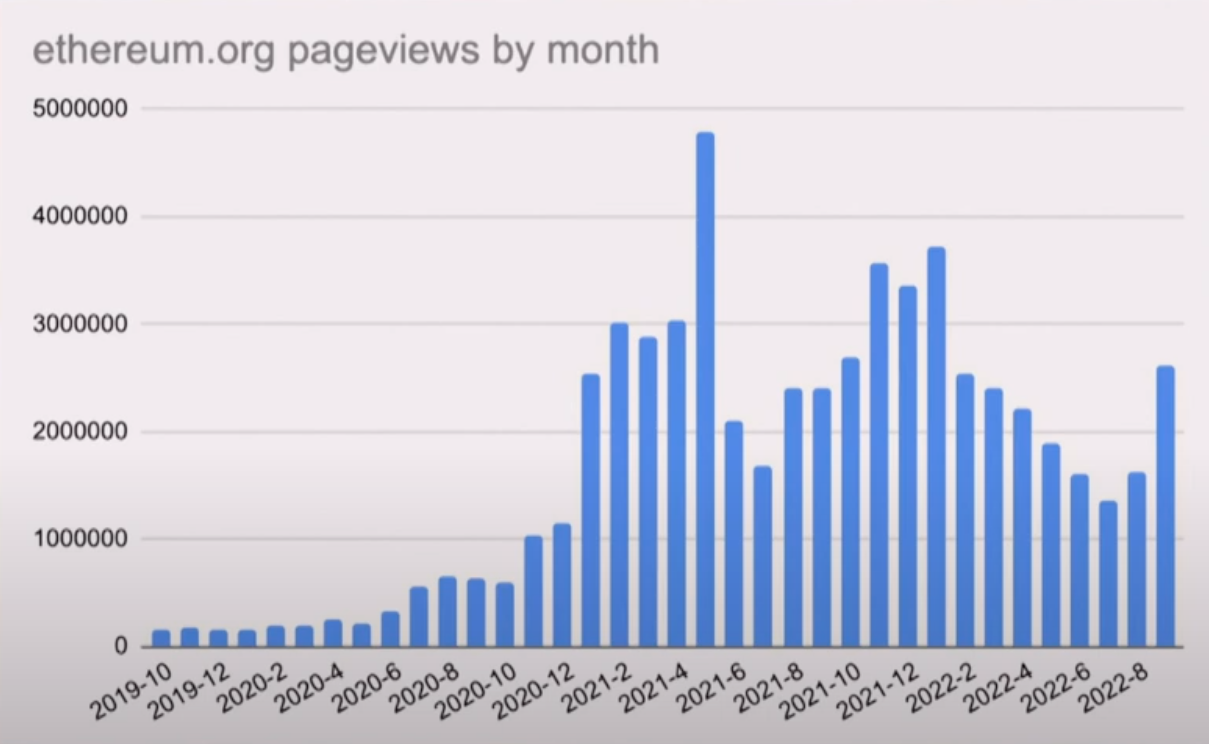Ethereum.org2019-2020
Platform Redesign
Overview
Ethereum.org was struggling. The team approached me to help build something that would actually work—a design system that regular people could use to contribute content, handle different languages, and grow with the community. What started as fixing their contribution flow turned into redesigning the entire site.
The problem: A confusing website that didn't serve anybody well
The fix: Make it the go-to place for learning about Ethereum
The Problem
Before 2018, ethereum.org was effectively just the Ethereum Foundation talking to itself:
- Barely any content, and what was there felt thin
- Only foundation people contributing
- Only mentioned projects they built
- No way for the community to actually help
- Just told people to "download stuff and code things"
Sam Richards put it perfectly: "ethereum.org basically was the ethereum foundation." But Ethereum had grown way beyond that—it needed a website that reflected the real community.
After a redesign by an outside contributor in mid-2019, the problems remained: the intended audience of the website was unclear, and did not lend itself to being a "world computer" secured with billions of dollars in value. And there remained a dearth of impartial information regarding Ethereum.
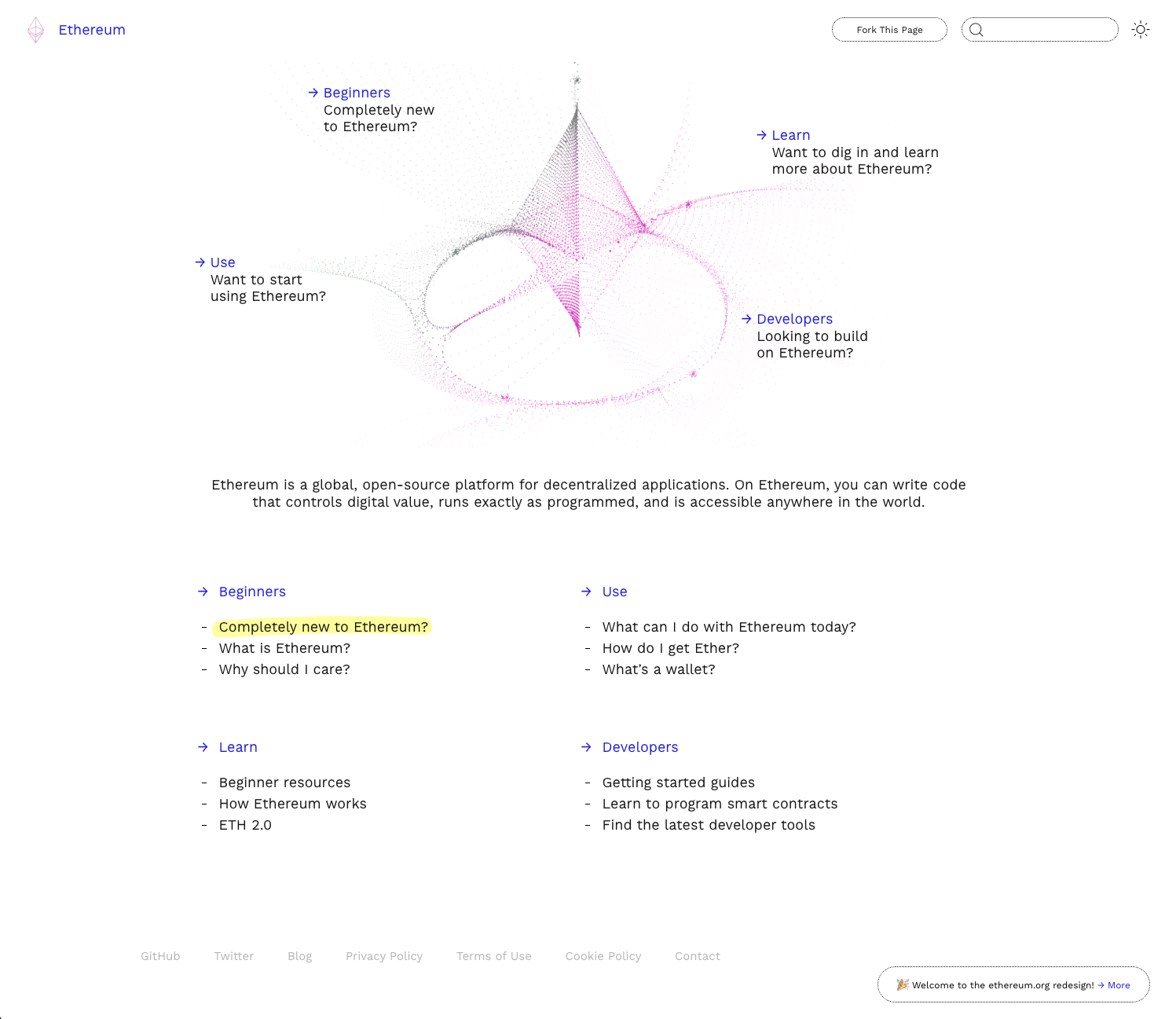
They needed someone to build something simple: a design system where anyone could contribute without jumping through hoops. Just GitHub, clear components, and obvious instructions about what things were for, how to use them, and where they belonged. The goal was turning ethereum.org into the place people trusted for learning about Ethereum. Neutral, helpful, and honest.
Design System Development
I was initially engaged to lead a design system that would work for real audiences, via identified personas. Not just designers or developers, but anyone who wanted to help make Ethereum more accessible.
The system had to incredibly simple and incredibly straightforward. Too much complexity would hinder contributions. It needed to handle:
- Hundreds of people creating content without breaking things
- Components that looked good no matter who used them
- Simple, clear instructions that didn't require a PhD
- Content that could grow organically without falling apart
This then became the foundation that let ethereum.org grow from 5 lonely pages to hundreds of pages with thousands of contributors writing in over 50 languages.
How it worked:
I used React and MDX so people could write in simple markdown but still use fancy components. Writers could focus on writing, designers could focus on design, and everything just worked together without anyone needing to become a coding expert.
The Transformation: Putting Principles Into Practice
Working with Liam Cobb, we transformed ethereum.org into something that was highly accessible while also being hopeful and inspiring instead of confusing. Clean. Utopian. But basic and approachable.
This wasn't just about making things pretty. The visual style had to make ethereum.org feel like a place for learning and possibility, not just dry technical docs. We wanted people to see Ethereum's potential for changing things, while making all the complex stuff feel approachable.
It worked. The community loved it, newcomers felt welcome, and the style became so synonymous with Ethereum that hundreds of other projects started using similar approaches.
Impact & Results
The numbers tell the story:
- Went from dozens to thousands of people contributing
- 5 pages became hundreds of pages of actual useful content
- Millions of people visit every month
- Available in 50 languages
- Over 4,000 volunteers translating content
- More than a quarter of visitors read it in their native language
- Fully community-run instead of foundation-controlled
Most importantly, ethereum.org became the place people actually go to learn about Ethereum. It's trusted, comprehensive, and genuinely helpful—exactly what the ecosystem needed.
Sam Richards talks about this whole transformation in his DevCon presentation Ethereum.org: Past, Present & Future (18:45). He explains how the design work made it possible for ethereum.org to become truly community-driven rather than just another corporate website.
